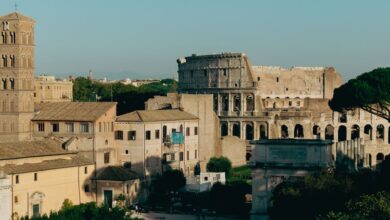The Visual Evolution of Search: Beyond Blue Links

Remember that feeling when you’re planning a trip, redecorating a room, or just looking for some new recipe inspiration? You don’t just want text; you want visuals. You want to see stunning landscapes, perfectly styled interiors, or mouth-watering dishes. For years, one platform has reigned supreme in this specific niche of visual discovery: Pinterest. It’s been the digital equivalent of flipping through an incredibly curated magazine, all tailored to your tastes.
But what if the world’s most dominant search engine decided it wanted a piece of that aesthetically pleasing pie? Google, ever the innovator (and sometimes, the imitator), is now stepping directly into Pinterest’s territory. They’re rolling out a dedicated ‘inspirational’ images tab right within their mobile search app, promising a personalized visual feed designed to spark your next big idea. It’s a bold move, and it signals a significant shift in how Google views the future of search – moving beyond mere information retrieval to becoming a true wellspring of inspiration.
The Visual Evolution of Search: Beyond Blue Links
For decades, Google was synonymous with the ten blue links. You typed a query, and it gave you a list of websites. Efficient, yes, but often lacking the immersive experience that truly helps us envision, plan, and create. In an increasingly visual world, where Instagram stories and TikTok videos dominate attention spans, static text feels almost archaic for certain types of searches.
Think about it: when you search for “kitchen renovation ideas,” you’re not looking for a treatise on construction materials. You’re looking for sleek countertops, clever storage solutions, and color palettes that resonate with your style. You want to *see* what’s possible. Google has understood this for a while, slowly integrating image search more prominently, but this new dedicated tab takes it a step further. It’s an acknowledgment that for many queries, especially those driven by aspiration or lifestyle, an image isn’t just supplementary – it’s the core of the answer.
More Than Just Information Retrieval: The Pursuit of Inspiration
This isn’t just about showing you relevant pictures. This is about understanding intent that goes beyond a factual query. When you search for “Mediterranean patio ideas,” Google isn’t just pulling images of patios and Mediterranean architecture. It’s trying to understand the *vibe*, the aesthetic, the emotional resonance you’re seeking. It’s moving from “what is” to “what could be.”
This subtle but profound shift transforms Google from a librarian into a digital muse. It’s about predicting not just what you’re looking for, but what you might *want* to be looking for, based on your previous searches, saved items, and overall digital footprint. It’s a powerful application of AI, aiming to connect you with ideas you might not have even known you needed.
Google’s Playbook: Personalization and Ubiquitous Convenience
So, how exactly is Google planning to execute this? The core of the strategy lies in seamless integration and hyper-personalization. By adding an “Images” icon at the bottom of Google’s Search app for iOS and Android, they’re placing this inspirational feed right where millions already begin their daily digital journeys. It’s not a separate app to download; it’s just another facet of the Google experience you’re already familiar with.
This isn’t just a generic image feed. It’s designed to display images personalized to the user’s interests. Google’s advantage here is immense. With access to your search history, YouTube watch patterns, location data, and even the content of your Gmail (anonymized, of course, but contributing to a broader interest profile), Google possesses an unparalleled understanding of your preferences. This depth of data allows for a level of personalization that’s hard for competitors to match, ensuring that the images you see are genuinely relevant and inspiring to *you*.
Seamless Integration vs. Standalone Experience: The User Journey
The strength of Google’s approach lies in its sheer convenience. When you have an idea forming in your head, the path of least resistance is often the one you take. If you’re already in the Google search app, maybe checking the weather or looking up a quick fact, the “Images” tab is just a tap away. There’s no need to stop what you’re doing, open another app like Pinterest, and then navigate to your feed.
This frictionless journey could be Google’s secret weapon. It caters to the modern user’s desire for instant gratification and minimal cognitive load. You see something interesting, you tap, and you’re immediately immersed in a visual world tailored to your latent interests. Pinterest, while excellent, requires a conscious decision to open its app and dive into its specific ecosystem. Google hopes to intercept that decision point earlier, right at the initial spark of curiosity.
The Pinterest Predicament: Can Google Win the Visual War?
This brings us to the elephant in the room: Pinterest. For years, Pinterest has cultivated a unique identity as the go-to platform for visual discovery, planning, and aspiration. It’s a place where people actively go to curate mood boards, save recipe ideas, plan weddings, and find DIY projects. It has a strong community aspect, with users “pinning” and organizing content into thematic boards, often reflecting their aspirations and dreams.
Can Google truly compete with that established culture and user behavior? Pinterest isn’t just a collection of images; it’s a culture of curation. Its users often have a specific mindset when they open the app – they are in “discovery mode,” actively looking to build and save collections of ideas. Google, while powerful, has always been more of a utility, a direct answer engine. The challenge for Google will be to evoke that same sense of wonder, possibility, and active curation within its more functional framework.
Beyond the Aesthetic: Functionality and Intent
However, Google does have a few powerful cards up its sleeve. Beyond merely displaying beautiful images, Google’s deep understanding of intent and its vast network of interconnected services could provide a unique advantage. Imagine finding an inspiring kitchen design, and with a single tap, Google connects you to local contractors, product links for the appliances, or even augmented reality tools to visualize it in your own home.
This moves beyond pure aesthetic inspiration to actionable functionality. While Pinterest excels at the “dream board” aspect, Google might aim to excel at the “make that dream a reality” aspect. By integrating commerce, local services, and deeper search capabilities directly into the image feed, Google could offer a more holistic and ultimately more useful experience for users who move from inspiration to action.
The Future of Visual Discovery
Google’s new inspirational images tab is more than just a feature update; it’s a declaration of intent. It signals a future where visual content isn’t just an adjunct to text but a primary mode of discovery and interaction. For users, it promises a more visually rich and personalized search experience, making it easier than ever to find inspiration and turn ideas into reality.
For content creators, designers, and marketers, this opens up yet another significant avenue for visibility. Optimizing images, understanding visual search intent, and creating truly inspiring visual content will become even more crucial. While Pinterest has built a formidable fortress, Google’s aggressive push into this space underscores the undeniable power of visual storytelling. The visual web is evolving, and with Google joining the fray in earnest, it’s going to be an exciting, and no doubt beautiful, journey ahead.





